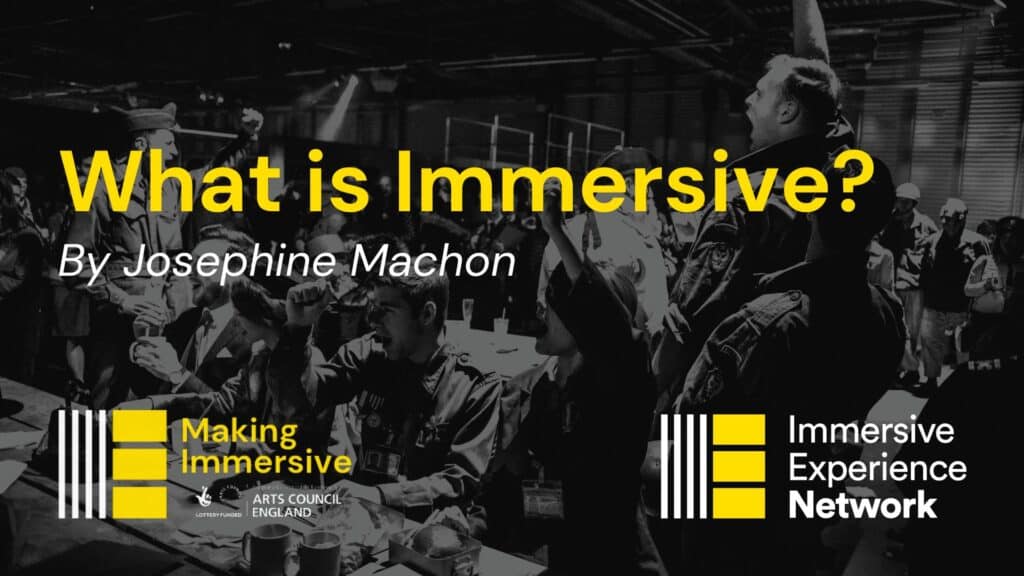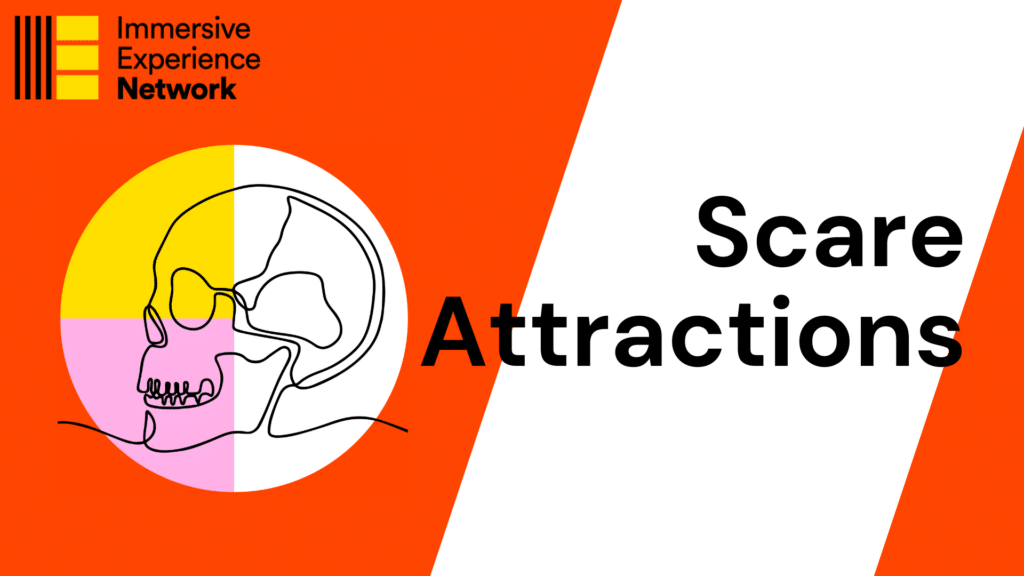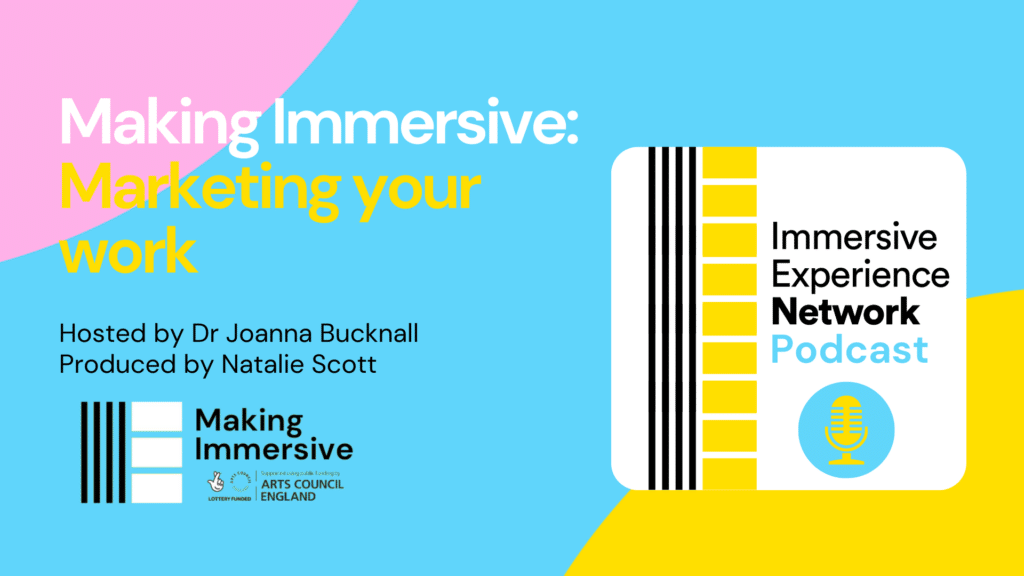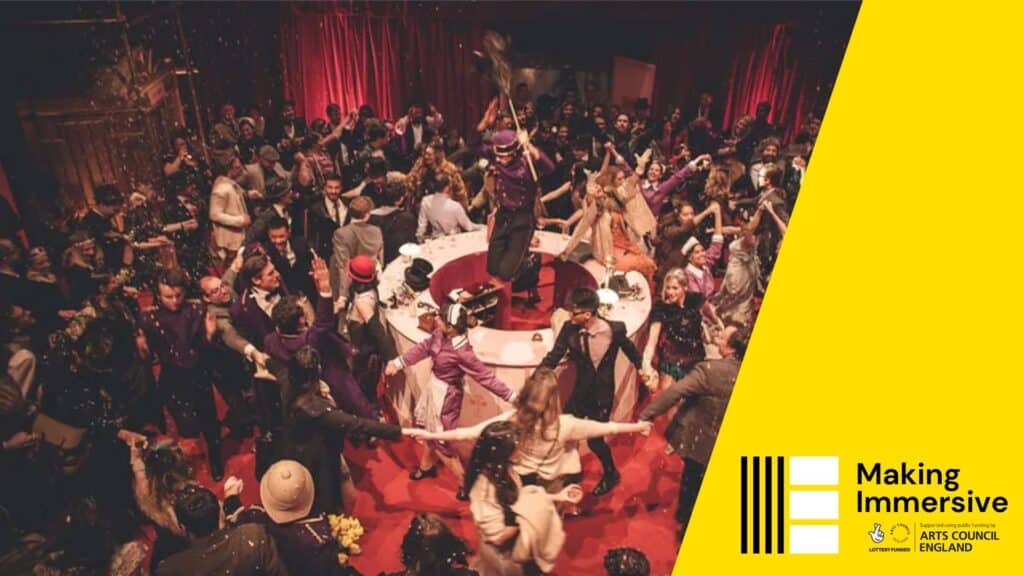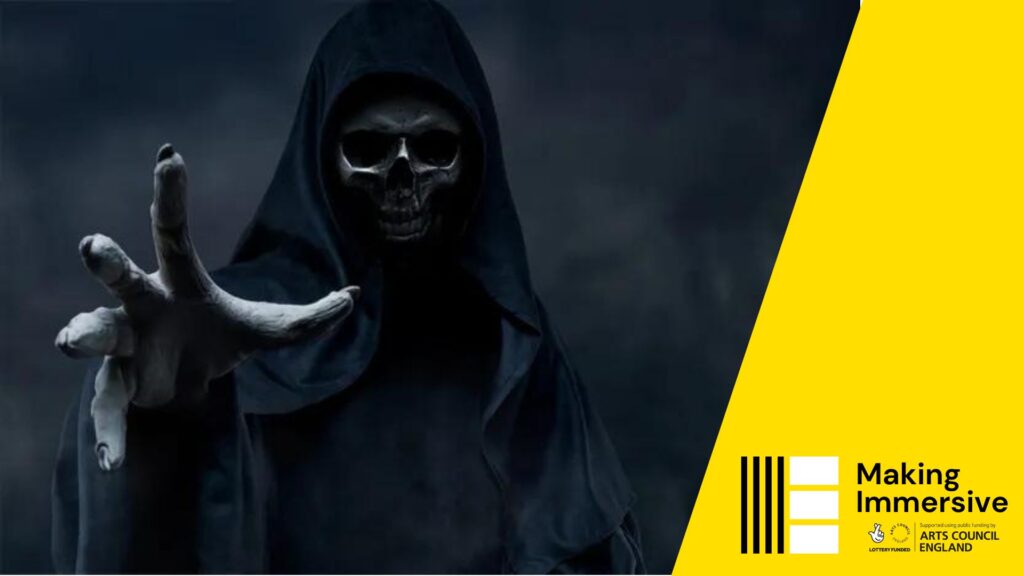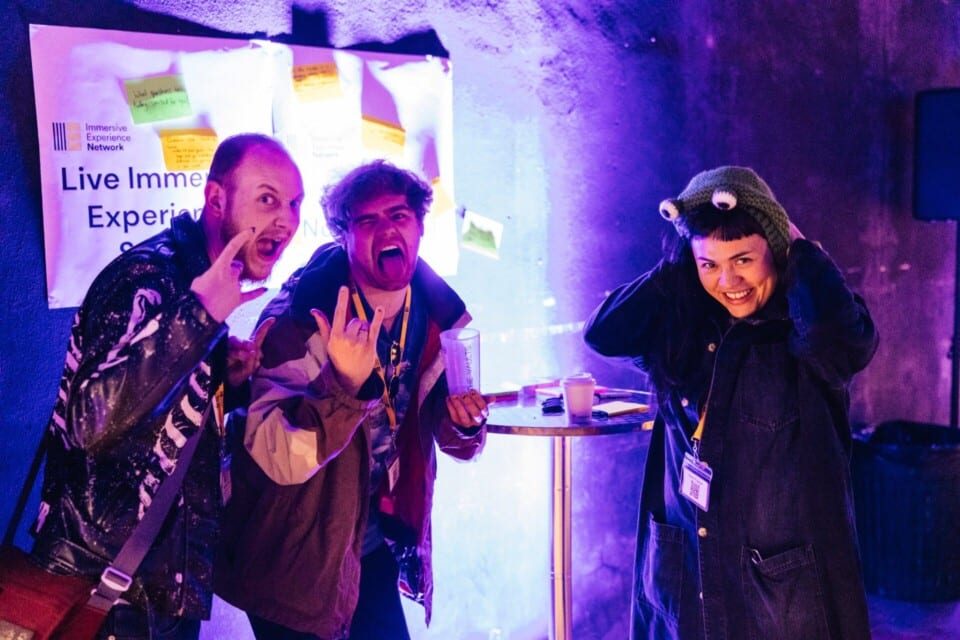How do you sum-up what makes an immersive experience live? Well, to shift the idiom, you have to be there – literally – physically present and engaged.
For those that haven’t, been there, it might help to remember (or imagine) being a child and entering a room despite, no, because it was without permission. Perhaps it belonged to the adults of the house, better still upstairs along a corridor, best of all, an attic. The door alone tantalised, sparked curiosity, the first push of the door thrilled. The trepidatious step over the threshold activated anticipation, marked the change in temperature, light, acoustics. Solidity or softness in every surface touched, the thickness of scents, tempted to touch every artefact, the attendance to time, to every moment mattering, so aware of your own awareness. Then the secret knowledge that you did it, the sensory memory of everything in it and all you did there when you make your exhilarating exit without having been caught. Well, that activity, those sensations, resonate with a live immersive experience.
I’m pushing through the door too soon though. In summarising what defines immersive performance we must return to the threshold of this century, where the term surfaced as a catch-all for a dynamic movement in theatre. In fact, we should retrace millennia, as its origins lie in prehistoric stories around fires; in the crackle of the fire as much as the stories that were told. Through age-old, worldwide rituals and pageants, into early-mid-20th Century Modernist experimentations, ‘Happenings’ and solo, durational performance art. The 1970s onwards hailed the ‘immersive’ predecessors – Welfare State, Brith Gof, and Geraldine Pilgrim’s site-responsive work – and Catalan La Fura Dels Baus’ first international tour, landing at London’s Royal Victoria Docks in 1983, was key.
On the cusp of the millennium Deborah Warner’s St. Pancras Project (1995) and Artangel productions, such as Hans Peter Kuhn/Robert Wilson’s, H.G. (1995) and Janet Cardiff’s audio-walk (1998-99), proved inspirational. Wrights&Sights research-led practice (1997-) straddling the academic and artistic, nourished graduate practitioners. BAC’s Playing in the Dark Season (1998) was important, hosting Sound and Fury’s early work, while De La Guarda’s Villa! Villa! (1999), marks the South American influence; a gig-dancetheatre-mashup staged at Camden’s Roundhouse, incorporating aerial acrobatics and film-projection. The turn of the 21st Century saw a style of performance emerge from this rich legacy, alongside the physical theatres that reinvigorated British performance from 1980-99, and equally from underground club nights, burlesque and circus, cinema and music festivals. UK-based artists, prominent throughout the noughties for creating work that required a term to describe the feeling as much as the form they were producing, including, Carnesky, dreamthinkspeak, Punchdrunk, Shunt, wilson+wilson, ZU-UK, ensured that by 2010, ‘Immersive’ was fixed to this expansive performance genre.
Live immersive work can be encountered in a variety of ways; unexpectedly in public locations, privately in transit, in shipping containers, underground bunkers and labyrinthine vaults, walking across moors, or as game-play. It might be experienced in the comfort of your own home, where you’re cast as protagonist in, or voyeur of, your own imagination. The pandemic saw to the rise of immersive interactions on phones, via WhatsApp and Zoom. A wealth of performance theory now exists examining live immersion, spanning the what it is and the how to make its, to its reframing, decolonising and beyond, into arguments for the ‘post-immersive’. Critical contexts also survey the blurred lines between the liveness of live immersive experiences and its associated forms.
Swiftly embraced by the mainstream and exploited commercially around the globe, it’s now commonplace for publicity and programming materials to capitalise on the term. Immersive experiences are as much part of the West End experience as the experimental scene. Think, Mamma Mia: The Party or the London revival of (note the lengthened title), Cabaret at The Kit Kat Club, offering a drink-dining experience to those who sit at stage-side tables, while the ‘cheaper’ seats in the auditorium look on at the world of the event. Bridge Theatre’s Guys and Dolls’ ‘immersive [rather than seated] tickets transport you to the streets of Manhattan and the bars of Havana’, meaning, standing tickets close to the action on the moveable stage and a bit of performer interaction as the musical plays out. It’s certainly entertaining to experience it this way, but fully immersive it’s not. These shows use immersive techniques effectively within the standard conventions of theatre spectatorship; and this spectatorial set-up helps demonstrate a scale of immersivity, determining what is and isn’t immersive.
So how can you tell what it is when you’re in it? Well, that’s exactly it – you will be in it, rather than looking on at it, separated from the stage by an auditorium. This isn’t a value judgment on which is better, simply an acknowledgment of what happens in live immersive experiences that differentiate them from other performance events and comparable disciplines. Whether grand or minimalist in scale, live immersive events always establish an in-its-own-world-ness, that exists on its own terms. Wholly immersive live experiences come close to dreamworlds – merging the actual and the imagined, playing with perception. Hermann Hesse’s Steppenwolf or Lewis Carroll’s Alice are often called upon to help describe these live, theatrical experiences; led by curiosity, tantalised by signs through flickeringly lit doors, falling into topsy-turvy, back-to-front dream realms, where tunnels and mirrors, become portals and metaphors. (Unsurprisingly, Alice is repeatedly adapted into immersive experiences, notably in Labyrinth’s London Waterloo Vaults and Third Rail Project’s NYC, Then She Fell.)
Live immersive experiences engender a feeling of being submerged in another medium that operates outside of the timeframe, rules and relationships of the everyday. These are places that have their own rhythm and choreography. Large-scale works occupy vast, multifaceted sites where audiences roam freely, piecing together narratives, their rhythm and flow making the space buzz with vitality. Concentrated one-to-one encounters may still time, despite lasting minutes rather than spanning hours (see, Curious, Adrian Howells, or Tania El Khoury). If inside, experiential qualities of dimension and design are exposed through scenography, which may include letting architectural details do their own, already evocative, thing. If outside, the natural power of landscape or intricate details of townscapes are harnessed (WildWorks works work here).
Whole-body engagement intensifies affective involvement in ways that, conceptually and physically, move beyond the usual exercising of this capacity in an auditorium seat. Duration becomes an experiential element within the world. Tactility is prioritised; sensual details that are touch-real, break down the boundary between the ‘real world’ and this imaginary one. Olfaction can be as significant as vision or hearing in interpreting the work. Performers are expert at interacting with audiences, often silently, subtly scored. Digital technologies, if employed, are crafted to take the audience further into the sensory experience, rather than distancing them from it (ZU-UK’s Within Touching Distance is exemplary).
Audiences inhabit these worlds, interact intimately with the stories they tell. In facilitating this, some kind of ‘contract’ always exists to set up the mechanisms by which participants enter the world, engage with it, are enabled to exit, return to reality. Guidance may be explicit – written or spoken prior to entering the space – or implicit within the world’s composition, becoming clear in a tacit fashion as individuals move through; follow this candlelit path to that light-source, head to where the music plays. Binaural soundscapes in headphones contour imagination, with instructions that direct and regulate action.
Expertise in the handling of processual caretaking is vital, demanding sensitivity to the principles behind invitations to participate. Consequently, live immersive practice has been held accountable for issues of consent and is at the forefront of theorising the ethics of this practice, mirroring equivalent research occurring in XR while embedding safeguarding within dramaturgy for artists and audience members alike. Given that audiences shape these experiences, in form, narrative, theme and interpretation, alternative collective nouns are often used by makers, from the collaborative, co-authors, co-creators, co-designers, to those descriptive of activity; adventurers, comrades, passengers, players. The interactive nature of this work, has led some companies (Access All Areas, Coney’s playful collaborations, or Slung Low) to deploy the form to model both inventive approaches to theatre and alternative ways that societies might operate effectively. A unique charm of this work is that it can remind individuals of what it is to be present; alive and engaged in community and conviviality, reinvigorating social connection and exchange.
The Immersive Experience Network is testament to how live immersive experiences have proliferated globally. The openness of the form to digital innovations as much as established performance traditions, the progressive thinking of its makers, the massive audiences drawn to it, all indicate that the live immersive realm will remain inventively nimble, expanding scope and reach. The diverse experimentations that (must) continue to thrive in the arts in higher education, the pupils testing the form as part of their secondary studies, the children and infants who have access to bespoke immersive experiences, signal not only a future for live immersive practice but also its intrinsic value, beyond the commercial; to imagine and create new worlds.

